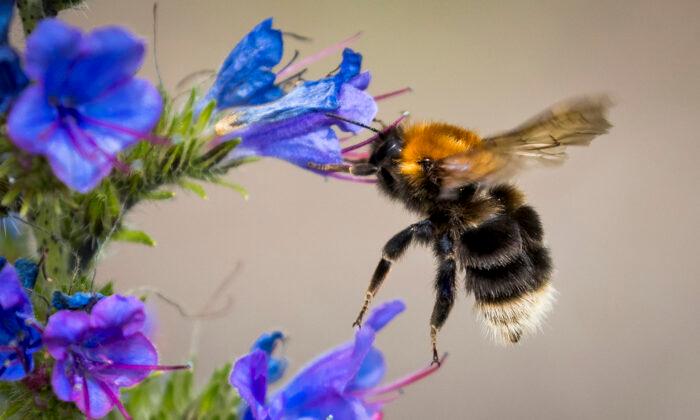California’s Third Appellate District Court of Appeals ruled May 31 the state law protecting endangered and threatened species can add the bumble bees to the list under the classification of fish.
State law lists protected species in separate divisions: bird, mammal, fish, amphibian, reptile, or plant—leaving out bees and other insects.
The issue began in a 2019 lawsuit, when the California Fish and Game Commission attempted to protect the bees under the Endangered Species Act.
The commission wanted to add the Crotch’s bumble bee, Franklin’s bumble bee, Suckley cuckoo bumble bee, and the Western bumble bee—all terrestrial invertebrates—to the list under the category of fish.
But a group of almond growers, farmers, and other agricultural groups argued the commission exceeded its authority in attempting to classify a bumble bee as a fish.
A lower district court ruled in favor for agricultural groups in 2020 saying insects do not fall within any of the categories protected by the endangered species act.
In the past, fish were defined as “wild fish, mollusks or crustaceans, including any part, spawn or ova thereof.” But the legislature expanded the definition in 2015 to include invertebrate, amphibia—or part, spawn, or ovum of any of those “fish.”
Thanks to terrestrial mollusks—more commonly referred to as snails—California ruled these land-based spineless creatures are considered “fish” due to their ability to also dwell in shallow and deep regions of the ocean and freshwater.
As such, the 2020 ruling was overturned in the court of appeals, as bumble bees are terrestrial invertebrates.
“The term fish is colloquially and commonly understood to refer to aquatic species, the [term] employed by the Legislature in the definition of fish ... is not so limited,” Associate Judge Ronald Robie wrote for the appeals court.
“We conclude ... that a terrestrial mollusk and invertebrate is a threatened species (express language we cannot ignore), is that fish ... is not limited solely to aquatic species. Accordingly, a terrestrial invertebrate, like each of the four bumble bee species, may be listed as an endangered or threatened species under the Act.”





